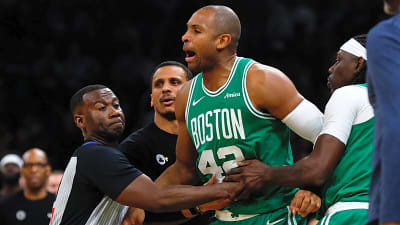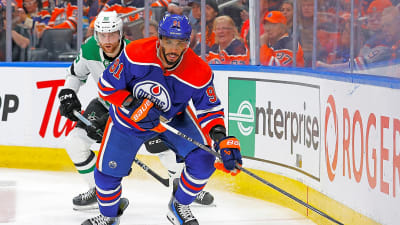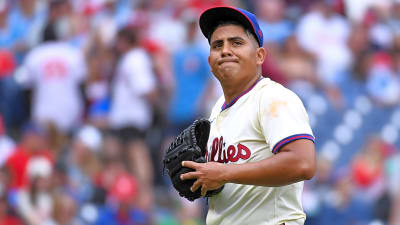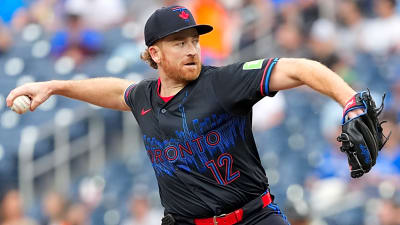
In life, sometimes you choose a direction. But sometimes your direction is chosen for you.
The Flames franchise has existed since 1972, with 2024-25 campaign being their 52nd season of play in the National Hockey League between Atlanta and Calgary. For the vast majority of their existence, they’ve been trying to actively, immediately win a Stanley Cup.
Cliff Fletcher became the Atlanta Flames’ general manager in 1972. His prior roles were as a scout with Montreal and as assistant GM in St. Louis; the Canadiens won six Cups while Fletcher was on staff, while the Blues went to three Cup Finals. By the time Fletcher ascended to the big chair in Atlanta, the objective was clear and Fletcher had seen how championship teams were built. (In Atlanta, the arena needed to be mostly full to make the team financially viable, which aligned with what Fletcher had in mind anyway. The team gradually got pretty good but struggled to get a toehold with fans in Georgia, and the team was sold and moved in 1980 anyway.)
Thus, from 1972 until around 1991, even in the face of a relocation to Calgary, the Flames continually built their team towards their goal of a championship – Fletcher earned the nickname “Trader Cliff” for his constant tweaks and tinkers to a rapidly-improving team. In 1989, they reached the top of the mountain. In the early 1990s, though, the economics of running a competitive Canadian hockey team changed considerably on two fronts. First, the Canadian exchange rate with the American dollar plummeted, making it challenging for Canadian teams to raise revenue in Canadian dollars and compete with teams getting their revenues in the more valuable American dollars. Second, player salaries escalated considerably during the 1990s, throwing the competitive balance between Canadian and American teams further out of whack.
As such, while the Flames had some of their most challenging on-ice seasons between the 1990s and early 2000s – preceded by a slow motion dismantling of their powerhouse 1980s team – their results were the product of structural factors. They simply couldn’t afford to keep their 1989 team together due to salary escalation and the crashing Canadian dollar, so they were forced to sell off their stars, go young, and hope they could remain competitive on the ice. We would describe this phase more as “survival mode” than a “rebuild,” because calling it a rebuild implies they had a choice in the matter.
The NHL’s economics changed after the 2004-05 lockout. Fan interest in the Flames was sky-high after their run to the 2004 Stanley Cup Final and the installation of a salary cap and expended revenue sharing meant that the structural issues that handcuffed the Flames were gone. Moreover, Jarome Iginla and Miikka Kiprusoff had emerged as high-end NHL stars during the 2004 run, and so the Flames saw an opportunity to capitalize upon and pushed to maximize their on-ice values for the next decade or so.
By 2013, though, the Flames were faced with a choice: with Kiprusoff choosing to retire and Iginla opting for a trade to try to win a Cup elsewhere, the club could limp along and linger around the playoff pack, or they could choose to become more future-focused. You could argue that the club went into their 2013 rebuild out of necessity – their two best players were gone and they would’ve been incredibly diminished if they tried to remain a playoff contender – but there was still a conscious decision made by the club to build for the long-term rather than try for immediate success.
While the post-Iginla era of the Flames didn’t result in a championship, under Brad Treliving’s guidance the club amassed a great nucleus of high-end talent and experienced two of their best regular seasons in franchise history (2018-19 and 2021-22). But several key contracts expiring at the same time were followed by the departures of some key players, notably Matthew Tkachuk and Johnny Gaudreau, in the 2022 off-season.
The Flames were faced with a big choice in 2023-24: regroup or press onward. After a challenging 2022-23 season, pressing onward would’ve involved doubling down on a roster that didn’t really gel together during that season, but was full of known quantities – established NHL players who could be counted upon to get the Flames to a certain level. Regrouping involved many more uncertainties.
The Flames entered the summer of 2023 with seven pending prominent unrestricted free agents looming at the end of the 2023-24 season. Aside from re-signing captain Mikael Backlund, the Flames consciously made the decision to move on from the other six – five of them via trades, three of which were conducted in 2024. Another two veterans were traded during the 2024 off-season.
By the time the book was closed on 2024, it represented not only one of the largest single-year restructurings of the club’s roster in franchise history, but also arguably their single most decisive change of direction as well. And considering that the option to retain the club’s veterans would’ve involved far less potential variability in outcomes, the move for the Flames to get younger in 2024 is one of the bolder decisions the club has ever made.
Time will tell if the move will result in the Flames returning to championship contention. But considering the level of fan frustration seen in recent history with veteran-laden groups that under-achieved, the boldness of the new approach should be commended.
More must-reads:
- Golden Knights reportedly acquire, extend Mitch Marner
- Wild acquire former first-round pick from Red Wings
- The 'First-overall NHL Draft picks' quiz
Breaking News
Trending News
Customize Your Newsletter
 +
+
Get the latest news and rumors, customized to your favorite sports and teams. Emailed daily. Always free!








